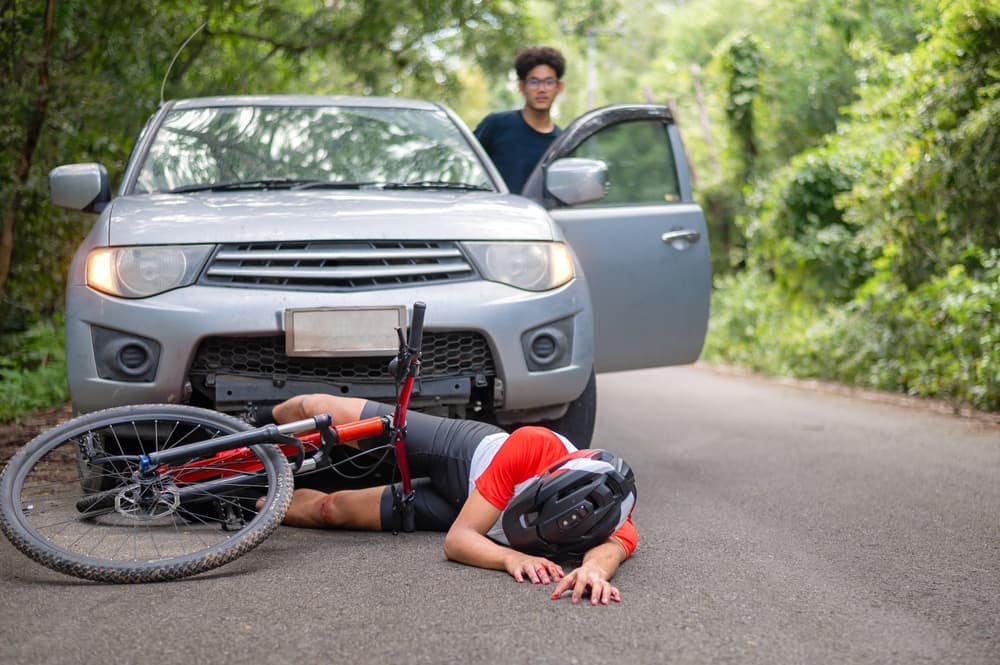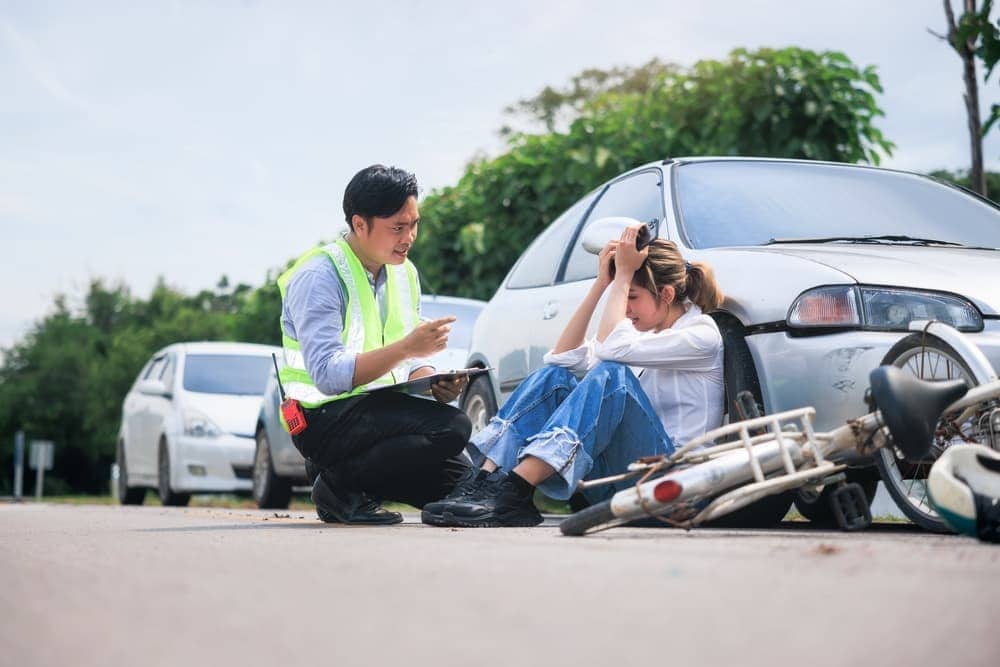
For every cyclist, hitting someone’s car can be an overwhelming and stressful experience. There may be many questions on the cyclist’s mind after such an accident. One of them is, “Who is at fault if a bicycle hits a car?”
Contrary to popular belief, just because the bicycle hits the car – not the other way around – does not necessarily mean the cyclist is automatically at fault for the accident. In fact, the cyclist is often not to blame.
Below are some common scenarios where a bicyclist may hit a car and how they can seek justice and financial recovery for their injuries. If you hit a car on a bike, always consult a bicycle accident attorney about a possible claim.

Even the most cautious and experienced bicyclists can find themselves in a collision with a car in scenarios where they are not at fault. Some of the scenarios where a bicycle hits a car but is not found at fault include:
By understanding the scenarios where a bicycle hits a car, but the cyclist is not at fault, there is an opportunity for the cyclist to advocate for fair compensation and avoid accepting a lower settlement offer.
Despite the fact that bicyclists are usually the most vulnerable party in an accident involving a bicycle and a car – with cyclists accounting for 2 percent of traffic fatalities in the United States – the determination of fault in such accidents is not that straightforward. Each bicycle accident is unique, and liability is determined based on the specifics of the incident. The legal considerations in determining fault in cases where a bicyclist hits a car include:
Despite the common belief that you must “blame the car driver, not the bicyclist,” the justice system must examine all the facts objectively. Making general assumptions about the fault in any vehicle collision situation is a misconception without a detailed review of the evidence. The fault is assessed after considering the actions of both parties, the conditions of the road, adherence to traffic laws, and expert witness testimonies. That is why you may need the assistance of a bicycle accident lawyer when trying to prove the other party’s fault.

Determining liability in accidents where a bicycle hits a car is contingent upon several factors, and demonstrating proof of fault requires establishing certain vital elements.
The first step in proving fault is establishing the existence of a duty of care. Every driver on the road, including bicyclists, has a legal duty to adhere to traffic laws and drive in a manner that does not put others at risk.
Example: A cyclist must obey traffic signals, yield when required, and ride in designated areas. However, if an accident occurs because a car driver opens their door without checking, thus obstructing the cyclist’s right of way, the duty of care is breached by the car driver, not the cyclist.
After establishing the duty of care, it must be shown that the defendant breached this duty through negligence or recklessness.
Example: If a car suddenly swerves into a bike lane, forcing the cyclist to hit the car to avoid a more serious collision, it can be argued that the driver has breached their duty of care by not respecting the cyclist’s space on the road.
Causation connects the breach of duty to the accident. In other words, it must be demonstrated that the defendant’s negligence directly caused the accident.
Example: Evidence here will involve showing that the car’s unpredictable maneuver (like the sudden swerve mentioned above) was the direct and proximate cause of the cyclist’s collision with the car rather than any action on the cyclist’s part.
Finally, there must be quantifiable damages as a result of the accident. It can include physical injury to the cyclist, emotional distress, damage to the bicycle, or other losses.
Example: Documentation of injuries sustained, repairs needed for the bicycle, medical reports, and any lost income from time off work will all contribute to the “damages” element of proving fault.
The evidence collected after accidents in which bicycles collide with cars should be comprehensive. Here are the primary types of evidence that can help establish fault in a bicycle-car collision:
Eyewitnesses can provide crucial testimonies that detail the accident from an onlooker’s perspective. Witness statements can confirm crucial details such as:
Surveillance and recorded footage serve as unbiased and undisputable observers of the incident:
The law enforcement officer’s account holds significant weight as these reports include observations from the police on arrival and the results of any preliminary investigation. In addition, citations in these reports, while not definitive proof of liability, may indicate which party has breached traffic laws leading to the accident.
Tangible evidence often tells the story of the event’s dynamics:
Specialists interpret the evidence to reconstruct the accident. Accident reconstruction experts employ various scientific methods to analyze damage, skid marks, and more to create a narrative of how the accident may have occurred. Their expert opinion can be necessary to establish the events leading to the incident when eyewitness or video evidence is incomplete or disputed.
Collecting a combination of these types of evidence can significantly bolster a case to prove fault. It is crucial for both parties, particularly bicyclists in such scenarios, to gather as much evidence as possible immediately after the accident to prove the other party’s fault and obtain the compensation they need.
 Are a Bicyclist Who Hit a Car" width="" />
Are a Bicyclist Who Hit a Car" width="" />
Hitting someone else’s car on your bicycle might seem like a hopeless situation for you. However, just because your bicycle hits the other car does not necessarily mean you are at fault for the accident. You might still hold the driver of that car liable for the accident and obtain compensation for the medical expenses, loss of income, and other damages you have suffered.
You can do this with help from a bike accident attorney, who can assist you with the following:
If you are unsure how a injury lawyer in Henderson can benefit you, feel free to schedule a consultation before hiring one. Most lawyers offer free initial consultations, which means you pay nothing for a lawyer to evaluate the facts of your case.
ABOUT THE AUTHOR
Edward M. Bernstein, Esq. is the owner and founding partner of Edward M. Bernstein & Associates, and one of the most recognizable figures in Nevada. Ed is one of state’s premier personal injury attorneys and has hosted The Ed Bernstein Show for over 31 years. He has served the Las Vegas community for decades with dozens of community appointments and terms of service. In the year 2000, he was Nevada’s Democratic nominee for the United States Senate.
Ed received his B.A. from Long Island University in 1971 and his J.D. from Widener University in 1975. Since then, Ed’s professional accolades include numerous publications, honors and awards, court appointments, and has been named one of America’s Top 100 High Stakes Litigators.